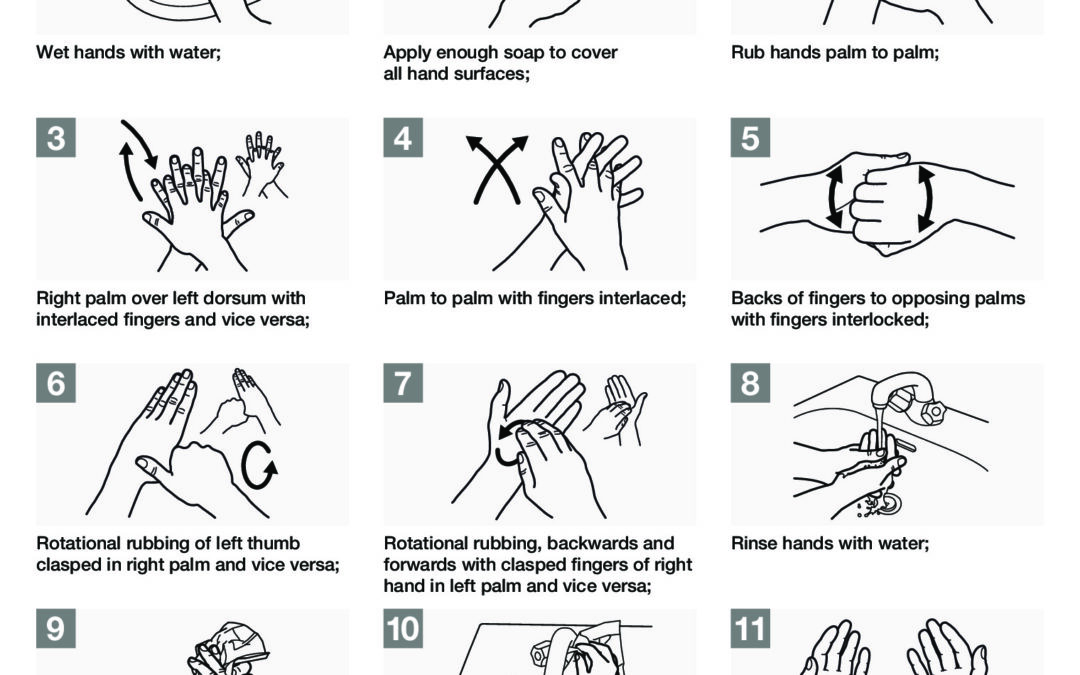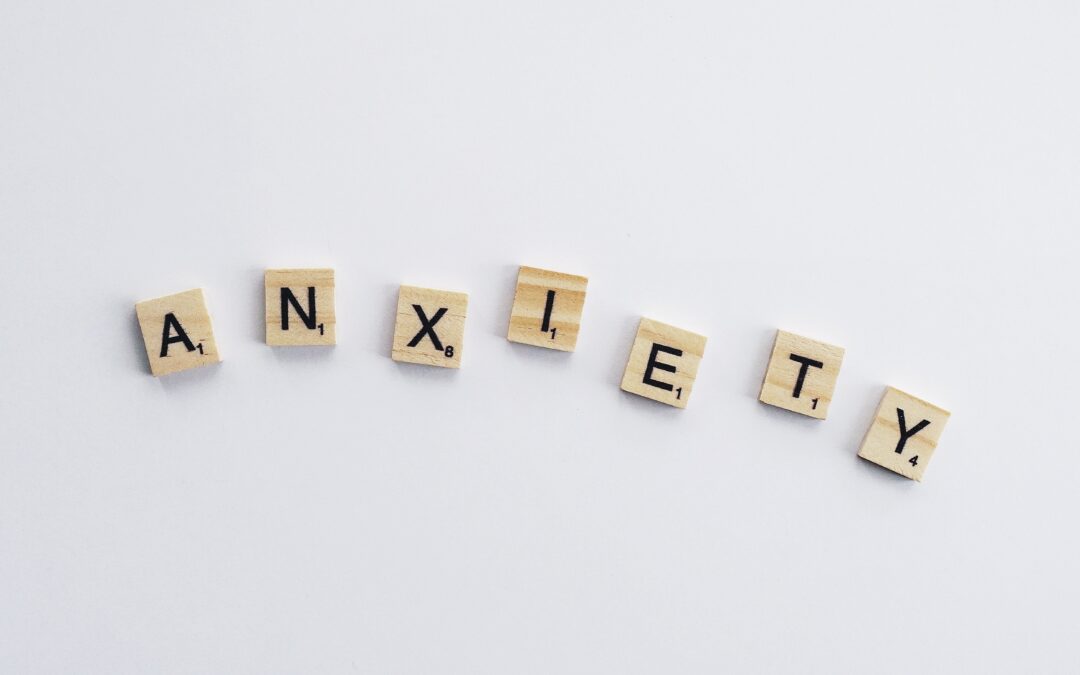
by Belinda | Oct 13, 2022 | Uncategorised, Workplace Education
Saturday 14th October is Global Handwashing Day. This year’s theme is “Unite for Universal Hand Hygiene”. The purpose of the day is to raise awareness about the importance of washing hands with soap.
What are the benefits of hand hygiene?
- Prevents the illnesses and the spread of infections
- Handwashing can reduce diarrheal diseases by 30%
- Handwashing can reduce acute respiratory infections by up to 20%.
- Reduces absenteeism due to gastrointestinal illness in school children by 29-57%
- Handwashing with soap plays an important role in reducing the transmission of outbreak-related pathogens such as cholera, Ebola, shigellosis, SARS, hepatitis E, and COVID-19.
- Hand hygiene is protective against healthcare-associated infections and reduces the spread of antimicrobial resistance.
- Hand hygiene may contribute to the reduction of Neglected Tropical Diseases.
(Source: Global Handwashing.org and CDC.gov.)
When should you wash your hands?
You should wash your hands before touching anything that needs to stay clean, and after touching anything that might contaminate your hands. It’s easy to remember. Just think, “when am I likely to get and spread germs?”
How do I wash my hands the correct way?
Is there a proper way to wash your hands or is just rinsing them under water enough? Any washing is better than none however it’s best to follow the five steps below to ensure you are washing your hands the correct way. Remember, you want to prevent the spread of germs.
- Wet your hands with clean, running water (warm or cold), turn off the tap, and apply soap.
- Lather your hands by rubbing them together with the soap. Lather the backs of your hands, between your fingers, and under your nails.
- Scrub your hands for at least 20 seconds. Need a timer? Hum the “Happy Birthday” song from beginning to end twice.
- Rinse your hands well under clean, running water.
- Dry your hands using a clean towel or air dry them.
(Source: www.CDC.gov.)

by Belinda | Oct 13, 2022 | Drug & Alcohol Testing, Health Assessments, Mental Health, Workplace Education
Know safety, work safely – encouraging everyone to make health and safety a priority in the workplace.
October is National Safe Work Month. The time of the year to commit to creating and managing safe and healthy workplace for all your employees.
Individuals, their families and the broader community are all impacted by work-related injury and illness. WorkSafe Victoria reported that 66 lives were lost in 2021 due to workplace injuries with an additional 23,000 workers being injured seriously enough to have a claim for compensation accepted.
This is why October is dedicated to being National Safe Work Month. During the month of October, businesses, employers and workers across Australia are asked to join National Safe Work Month and commit to building safe and healthy workplaces for all Australians. There is more that we can do to improve workplace health and safety, and together we can make a difference. Every workplace needs to take the time to properly assess their health and safety risks and plan how to eliminate or manage them.
So, what does having a healthy and safe workplace mean? It means that your workplace is free from physical and psychological harm. It is a positive, safe environment that benefits everyone.
Ideas for National Safe Work Month you can implement in your workplace
- Encourage staff wellbeing – implement wellbeing programs
- Organise health talks & health eating programs
- Encourage physical activity
- Conduct a safety training workshop
- Implement a stretching & warm-up session prior to starting a shift
- Host a session with a guest speaker on safety
- Launching a new health and wellbeing initiative
- Host a morning tea focused on wellbeing
- Make mental health a priority in your workplace
- Reward safety awareness
To find out more, visit www.safeworkaustralia.gov.au
To find out more about Work Safe Victoria’s WorkWell program visit www.worksafe.vic.gov.au/workwell

by Belinda | Aug 30, 2022 | Health Assessments, Uncategorised, Workplace Education
We are wishing to advise that effective as of August 01st 2022, the Geelong Medical Health Group (GMHG) has acquired the Occupational Health Screenings (Medicals) part of Mentor OHS Geelong.
This is a great opportunity for the GMHG as it complements and extends on the services we already have on offer at our Medical Centres and on-site through Workplace Health & Safety Vic.
Mentor Occupational Health Screening is now conveniently located at Myers Street Family Medical Practice, (148 Myers Street Geelong) and provides a range of services for pre-employment and railway medicals.
Services offered:
- Pre-Employment Medicals
- CAT 1/2/3 Rail Medicals
- Physio-Musculoskeletal Assessment
- Instant Drug & Alcohol Screen
- Audiology
- Spirometry
- ECG
- Immunisations
We also offer the below mobile service. These can be conducted at your workplace.
- Audiometry Testing
- Drug and Alcohol Testing
- Spirometry
Call us to find out more or to book an appointment. We can tailor a package to suit your needs.
Contact: Nikita – Mentor Occupational Health Screening
Mobile: 0476 500 654
Email: [email protected]

by Belinda | Aug 30, 2022 | Mental Health, Uncategorised, Workplace Education
Wednesday 21st September is World Alzheimer’s Day.
Alzheimer’s disease is a type of brain disorder that causes problems with memory, thinking and behaviour. It is a gradually progressive condition.
Some people use the terms Alzheimer’s and Dementia interchangeably however they are not the same. Dementia is the general term that is used to describe a group of symptoms that affects memory, thinking an interferes with daily life. Alzheimer’s disease is the most common form of Dementia, affecting up to 70% of all people with dementia but it’s not the only one. (Source: dementia.org.au (2021).
World Alzheimer’s Day highlights the importance of talking about Alzheimer’s, raising awareness of how it impacts the daily lives of people affected by the condition and challenge the stigma that surrounds it.
Symptoms:
- Vagueness in daily conversation
- Memory loss – Misplacing items
- Taking longer or having trouble to do regular tasks
- Forgetting well-known people or places
- Difficulty processing questions & instructions
- Decline in social skills and withdrawal from friends, family and community
- Repetition – asking the same question several times
- Increased confusion and disorientation
- Apparent loss of enthusiasm for previously enjoyed activities
- Difficulties with problem-solving
- Trouble with speech or writing
- Becoming disoriented about times or places
- Mood and personality changes
- Emotional unpredictability
- Problems with short and long-term memory
Factors known to increase the risk of developing Alzheimer’s include age, family history, genetics, head injuries and past head trauma. There is currently no cure for Alzheimer’s, however there are treatments available that can slow progression and help manage the severity of your symptoms.
If you have been diagnosed and are still working, you will need to consider how Alzheimer’s will affect your work. Some of the effects of Alzheimer’s on your work may include:
- Difficulty communicating your thoughts
- Trouble concentrating
- Forgetting important meetings or appointments
- Difficulty managing several tasks at one time
- Losing confidence in work abilities
- Feeling uncertain about making important decisions
It is important to seek guidance and support.
How can your workplace help support somebody in the workplace with Alzheimer’s?
Whilst it’s not often widely talked about, people suffering Alzheimer’s can still infact work and have a meaningful career. The impact of Alzheimer’s not only affects the sufferer but also their caregivers.
If you have someone in your workplace that has Alzheimer’s or is a caregiver, you can help support them by:
- Offering education to the staff to increase awareness
- Promote conversations
- Offer support and flexibilities
- Offer caregivers benefits to juggle work & personal responsibilities
- Address stigmas
- Choose tasks fit for the person’s ability
- Provide simple written instructions
- Help limit distractions
- Help plan daily activities
- Show compassion
- Provide ongoing support
- Eliminate less meaningful job functions to enable focus on more important priorities
- Divide large tasks into smaller tasks
- Make reasonable adjustments
- Encourage open dialogue
- Provide memory aids (notes, reminders, to-do lists, calendars) and assistive technology
- Employee and employers – work together

by Belinda | Aug 30, 2022 | Uncategorised, Workplace Education
The migraine and headache awareness week “Commit to Care” is this year being held from the 19th – 23rd September.
Most of us will experience a headache at some stage of our life. Infact, headaches are one of the most common symptoms experienced by humans. Migraines, (a more severe form of a headache) is more common than you may think. It is estimated that 4.9 million Australia’s are currently suffering from migraines. Whilst it’s obvious that a migraine has a massive impact on the individual suffering from it, it also has a significant economic impact. “The total economic cost of migraine in Australia is $35.7 billion. This consists of $14.3 billion of health system costs; $16.3 billion of productivity costs; and $5.1 billion of other costs.” (Source: Deloitte Access Economics – 2018)
What is a headache?
A headache is a very common condition that causes pain and discomfort in the head, scalp, or neck. Headaches can sometimes be mild, but in many cases, they can cause severe pain that makes it difficult to concentrate at work and perform other daily activities.
What is a migraine?
A migraine is a severe or intense pain in the head that is usually longer lasting than a headache. Migraine sufferers frequently report throbbing pain that worsens with normal activity.”
What is the difference between a headache and a migraine?
Whilst some people use both terms interchangeably, there are noticeable difference between a headache and a migraine. The main one being the severity of the pain. There are also some other significant differences.
Headache
- Mild, dull pressure/tightness
- Distracting pain (not debilitating)
- Steady ache
- Mild to moderate pain
- Short lived
- Treatable with medicine, rest & water
Migraine
- Pain on one side of the head (can be on both sides)
- Moderate to severe pain
- Intense pounding or throbbing pain
- Steady ache
- Nausea and dizziness
- Sensitivity to light or sound
- Aura before onset
- Can last for days
What can cause a headache in the workplace?
There are many factors in the workplace that that trigger a headache. Some may require easy fixes while other factors make require long term changes. Having a headache can significantly affect your productivity at work so it’s important you get them under control.
- Workplace stress
- Dehydration and/or caffeine withdrawal
- Prolonged exposure to computer screens
- Eye Strain
- Poor posture. Poor posture strains your muscles and can cause tension headaches
- Poor Nutrition
- Lack of sleep
- Exposure to odors and fragrances.
How to deal with a headache in the workplace
Usually, a headache does not require time off work. Headache sufferers can help themselves by practicing the following:
- Identify the cause of the stress and then take steps to help reduce it
- Regular breaks especially if work repetitive or using computers
- Relaxation techniques to rid the body of tension and stress
- Making the work environment as comfortable as possible. (Seating, lighting, fresh air, reduce screen glare, etc.)
- Varying position to avoid stiffness and tension
- Communicating and keeping work informed so a colleague could stand in the event of a headache
- Explaining their headaches to colleagues so they understand the necessity of time off from work

by Belinda | Aug 30, 2022 | Uncategorised, Workplace Education
OCD and anxiety disorders week (9-15th September)
Anxiety is the body’s natural reaction to dangerous, stressful, or unfamiliar situations. Every one of us experiences anxiety from time to time. It helps us to stay alert and aware and avoid danger. It is normally short-lived, and the feelings subside after a short period of time. Whilst it’s normal to feel a certain level of anxiety, for those suffering from an anxiety disorder, these feelings can be debilitating and can significantly impact their day-to-day life.
Anxiety disorders are the most common group of mental health conditions in Australia and affect 1 in 4 Australians at some stage in their life. (Source: Healthdirect.gov.au)
OCD and anxiety disorders week first began in 2009. It aims to share knowledge and reduce stigma around OCD and anxiety related disorders.
There are six different types of anxiety disorders:
- Generalised Anxiety Disorder (GAD) – Frequently worrying and feeling anxious about several different things.
- Panic Disorder (PD) – Regular and unexpected panic attacks. (Periods of intense discomfort or fear.)
- Social Anxiety Disorder (SAD) – Having a noticeable and constant fear of being criticised, embarrassed, or humiliated in one or more social or performance situations.
- Specific Phobia – Fear of a specific object or situation. Noticeable anxiety when exposed to a specific feared object or situation. This often leads to avoidance.
- Post Traumatic Stress Disorder (PTSD) – Develops following a traumatic event and is characterised by intrusive thoughts about the incident, recurrent distress/anxiety, increased physical and mental tension, distressing flashback, and avoidance of similar situations.
- Obsessive Compulsive Disorder (OCD) – Ongoing unwanted/intrusive thoughts and fears that cause anxiety and compulsive behaviours. Although they may acknowledge these thoughts as insignificant, they often try to alleviate their anxiety by performing certain repetitive behaviours and rituals.
Symptoms
- A sudden feeling of panic & fear (Panic attack) – (Feeling apprehensive or powerless)
- Increased heart rate (racing heart)
- Chest pain
- Shortness of breath
- Dizziness or lightheaded
- Hot flashes (sweating) or chills (sudden trembling)
- Cold or sweaty hands and/or feet
- Numbness in the hands and/or feet
- Uneasiness, nausea, or cramps (churning stomach or stomach-ache)
- Memory problems – Difficulty concentrating
- Sleep-related problems
- Persistent, repeated, and unwanted thoughts
- Obsessions and compulsions. Compulsive or ritualistic behaviour to get rid of the thoughts
Causes
The exact cause is not completely known or understood. It may be associated with:
- Changes in the chemistry and functioning of the brain
- Family history
- Environmental factors and stress
- Infections
- Stressful and traumatic life events
- Other mental illness/conditions
- Physical health issues
- Substance or alcohol use/abuse
It’s time to see your doctor or mental health professional if anxiety is impacting your everyday life. This is the first step to getting the help and support you need. If left untreated, anxiety disorders can lead to many complications and possibly life-threatening complications in severe cases.





